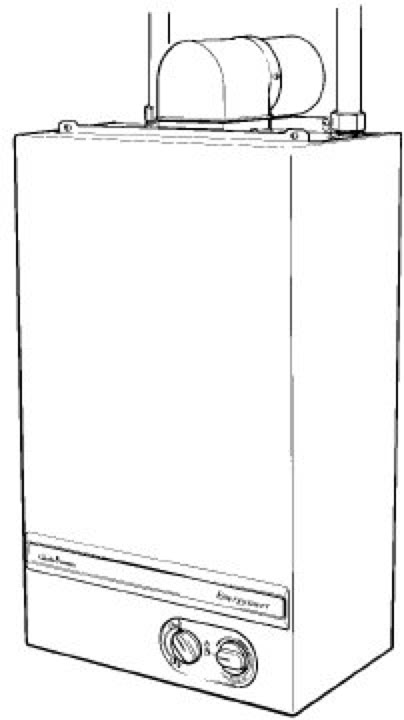
Mike the Boilerman -
Gas Safe Registered boiler and central heating repair technician in west Berkshire

Mike the Boilerman -
Gas Safe Registered boiler and central heating repair technician in west Berkshire
The Glow Worm Energy Saver is a early example of a low water content condensing boiler.
('Low water content' boilers have heat exchangers constructed from cooper tubing with heat-collecting fins attached, as opposed to having a conventional, one-piece cast iron heat exchanger.)
Like most early condensing boilers the Energy Saver has two heat exchangers rather than one. The primary heat exchanger collects the majority of the heat from gas flames burning on a conventional burner below, like an ordinary boiler. Flue gases are then routed through a secondary heat exchanger is fitted above, which removes more heat and the condensate thus generated is collected in a tray arrangement below this secondary heat exchanger and connected to a drain.
Being a condensing boiler, fuel efficiency is high. Fuel efficiency is quoted on the SEDBUK database as between 86.6% and 87.9% depending on the exact model you have. OK but not great for a condensing boiler. (Modern condensers usually exceed 90%.)
Unfortunately the Energy Saver is not well-regarded amongst heating engineers. It is seen as a poor design with latent flaws which would have been revealed had the boiler been properly field-tested and not rushed to market instead.
The main problem is the condensate collection tray under the secondary heat exchanger. Condensate is slightly acidic and the collection tray is made from aluminium - a fatal design flaw with hindsight. The condensate corrodes through the tray in just a few short years, leading to water dripping from the bottom of the boiler whenever it is running.
Now the news gets bad. Had the boiler been designed with this susceptibility to corrosion of aluminium in mind, the designers would have made the collection tray an easily replaceable part. Unfortunately, they didn't. The collection tray is an integral part of the secondary heat exchanger and the whole (very expensive) assembly has to be changed to repair this fault when it occurs.
Most users decide, when faced with a bill of many hundreds of pounds for fitting a new secondary heat exchanger assembly, to replace the whole boiler instead. Especially when they consider that there is no reason to expect the new part to last any longer than the old.
Verdict?
If you have an Energy Saver, my view is that it would be a good idea to replace your Energy Saver now, before you run into this problem.
Mike

If you like what I write, please Buy me a coffee. Thank you kindly!

Copyright Michael Bryant 2025
Site first published 16th January 2004
Site last updated 13th November 2025
Gas Safe Register 197499, CIPHE registration number 009909L

This website makes use of cookies. Please see my privacy policy for details.